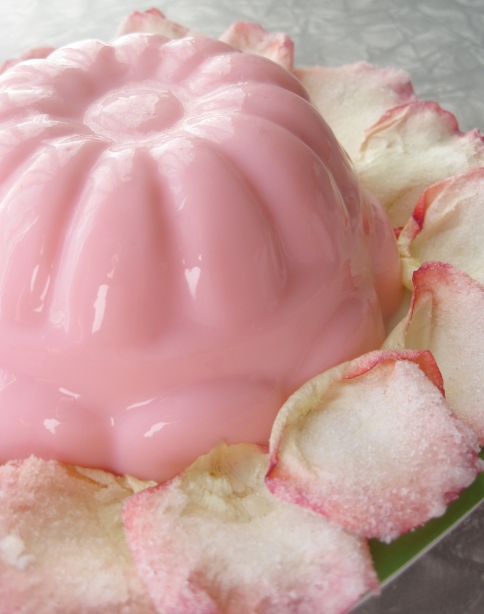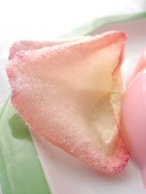To celebrate the third season of Downton Abbey, I’m re-posting a recipe from my Downton Abbey series. Oh yes, there will be more Downton inspired gelatins to come…
So yeah, like many people with Netflix and a heart, I freaking love the PBS Masterpiece Classic show Downton Abbey. I adore the rich and complicated characters, dramatic plot lines, Edwardian fashions, class struggles, women’s rights, and gelatin molds. Gelatin molds? Gelatin molds! It’s like the fine folks at Masterpiece Classic read my mind and created a television show guaranteed to suck away my time and provoke endless conversations with my girlfriends. Conversations that go like this:
Me: “So how kind and hot and sexy and smart and thoughtful is Matthew? What the hell was Mary thinking?”
Girlfriend: “I don’t care that his penis broke in the war. I’d find a way to work around it.”
Me: “I know, right?”
Or this conversation:
Me: “Did you see that creamy gelatin Daisy unmolded with Mrs. Patmore’s incessant nagging?”
Girlfriend: “No, I missed that.”
Me: “Or what about that red jelly in the first episode, what do you think that was? What would they use for food coloring?”
Girlfriend: “Uh, I don’t know.”
Me: “Didn’t you notice all those copper gelatin molds on the kitchen wall? Where can I buy those? I haven’t seen anything like that in Austin.”
Girlfriend: “I have no idea what you’re talking about.”
It’s no secret that foods made with gelatin, or “jellies” as the English say, were popular in Edwardian England. After some research (i.e. 15 minutes with goggle), I came across a myriad of Victorian and Edwardian gelatin recipes – hence my Downton Abbey Jelly Series was born. According to several cookbooks popular during Downton Abbey times, Blancmanges were common gelatin desserts that consisted of milk, sugar, citrus, and an essence of choice. See this recipe from, “The Easiest Way in Housekeeping and Cooking,” published in 1903. Since rose essence was popular in England before the commercialization of vanilla, and in honor of Mr. Molesley’s most worthy prize-winning rose, I decided to create a rose flavored blancmange.
In all honesty here, I was extraordinarily excited about this rose flavored blancmange, but was disappointed in the results. Maybe my American taste buds aren’t accustomed to rose essence, or my creamy-loving taste buds missed the fat inherent in heavy cream that is missing in just whole milk, but I found this recipe lacking in rich lusciousness. But it came out really pretty, right?
Well, this Rose Blancmange is only the first in a series of several Edwardian-era jellies to come – oh, the gelatin possibilities make me almost as excited as seeing Shirley MacLaine as Clara’s mom in season three!
Rose Blancmange Recipe for 2 cups
- One packet Knox gelatin
- ½ cup cold whole milk (for blooming gelatin)
- 1 ¼ cups whole milk (for heating)
- 2/3 cup sugar (or more to taste)
- Zest of ½ lemon
- 1 teaspoon rose water (I found rose water on the international food aisle at my local grocery store)
- 2 tablespoons brandy (optional)
- Red food-coloring (optional)
Put ½ cup of cold milk in a bowl and sprinkle gelatin on top. Set bowl aside. Over medium heat, heat 1 ¼ cups milk and sugar until sugar dissolves (be careful not to scald the milk). Add lemon zest, and remove from heat for 10-minutes. Strain mixture, and pour hot milk over the bloomed gelatin. Stir until gelatin dissolves. Add rose water, brandy, and food coloring (if using), adjusting proportions to your preference. Pour liquid into mold(s) and refrigerate until solid.
To remove gelatin, put mold into a bowl or sink full of warm water for a few seconds. After removing from water, gently shake the mold side to side. If gelatin has not separated from the edges of the mold, run a knife around the edge. Put plate on top of mold and flip over. If gelatin does not come out, try repeating the process.
Decorate with candies rose petal – I used this recipe from Food and Wine. Candied rose petals are easy, lovely, and delicious!




2 comments
Comments feed for this article
January 7, 2013 at 7:23 am
Yinzerella
Gorgeous!
September 18, 2020 at 11:00 am
Orem Reads Recipe: Blanc Mange | Just Browsing
[…] noodle soup, because people of that era would serve this dish to the sick. I adapted a recipe from The Modern Gelatina: Mr. Molesley’s Prize-Winning Rose Blancmange. I left out the rose water and added a vanilla […]